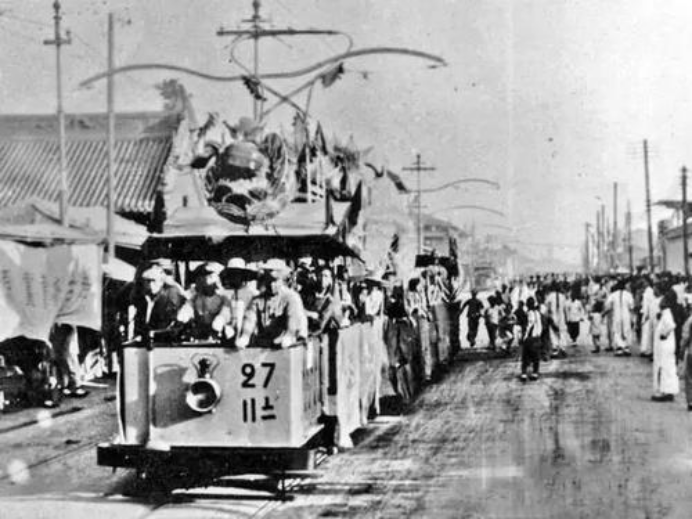Are you interested in knowing the development history of a city
The first city bus in China
In the last years of the Qing Dynasty’s reign, it was opened by the West by tough means. Because of the defeat of a series of wars, it had to sign treaties with Western powers. In these treaties, western countries all require them to have the right to set up enterprises in China. So these treaties are the key factors contributing to the emergence of Chinese buses.
Tianjin was one of the more developed cities in China during the reign of the Qing government. The western powers at that time took a fancy to the prosperity of Tianjin and forced the Qing government to turn Tianjin into a port for foreign trade, many foreign businessmen at that time began to settle in Tianjin.
Due to the population of Tianjin suddenly increased, Belgian businessmen found a business opportunity, he invested in trams in Tianjin. In the spring of 1906, Tianjin ushered in its first tram, which ran around the whole city of Tianjin. Because the tram was hung with a white sign at the front, this tram was also called a “white tram” by local Tianjin people. That is the first city bus in China.

City bus in Shanghai
In Shanghai, there was a tram only two years later. That is, in 1908. When the tram started at Jing ‘a Temple and ended at Waiyangjing Bridge. The appearance of this tram meant that Shanghai also began to have modern means of transportation, city bus.
In 1934, it was time for China to officially introduce a double-decker city bus from Britain. In 1949, Shanghai officially began to sell bus tickets to passengers. At that time, city bus tickets appeared in the form of monthly tickets and the price of this car at that time was 9 yuan. Besides the special monthly pass for buses, there are also trams. It was priced at 8.4 yuan.
On October 1, 1949, after the People’s Republic of China appeared on the world political stage, China began to actively develop its own road to power. Since those western industrial powers were driven back to their own countries, China began to develop its own public transport industry independently, city bus.
But at the time of liberation, due to the scarcity of China’s petroleum and other resources, we had to burn charcoal to create a power system for buses. Therefore, we can find that a bus with the word “charcoal” appeared in Guangzhou at that time.
This is also related to the policy of the United States at that time. After seeing China’s independence, the United States adopted the policy of “isolating” China. At the same time, it joined other western countries to adopt the measure of “embargo” against China, hoping to restrain China’s development. Therefore, in the early days of liberation, “charcoal” was widely used as power in Chinese city buses, even white coal was used when charcoal was scarce. This phenomenon was not solved until China discovered oil fields in Daqing in the 1960s.

City bus began in common use since 1970S
In the 1970s, China began to develop Chinese buses in Beijing, which led to the emergence of the Yellow River BK670 bus. At the same time, in 1978, the Chinese government fully used this type of bus in Beijing. It was not until 2006 that this type of city bus officially withdrew from the stage of Chinese buses.
In the 1980s, due to the emergence of the reform and opening-up policy, China’s economic development began to show a straight-line upward trend. Therefore, at this stage, city bus began to be popularized throughout China. At the same time, an enterprise called “Second Bus” was established in Guangzhou, and then double-decker city bus was officially introduced to Britain.

In the 1990s, due to the prosperity of the economy and the improvement of people’s living standards. There were certain requirements for city bus facilities, so buses at that time would combine aesthetics with practicality. Then came the 21st century, because of the continuous development and improvement of science and technology. Advanced technology is also constantly affecting the improvement of bus performance.
At the same time, after 2000, China took the initiative to reform the ticket system of the public transport system in China and changed the previous subsection charging into a unified fare. But it will still implement the subsection charging in some remote places. After the fare reform, city bus began to take the form of unmanned ticket sales, thus saving labor costs. After that, convenience measures such as bus cards and mobile phone cards appeared one after another.
With the increasing number of city bus lines, our travel will become more and more convenient.
 Mini Bus
Mini Bus